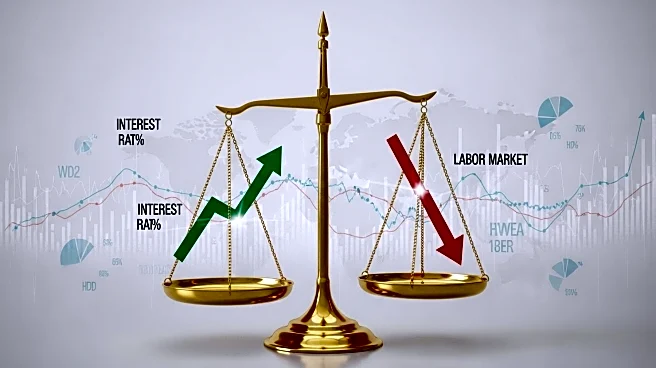What's Happening?
The U.S. bond market is signaling concerns about the economy's health, as recent data indicates a weakening labor market. The two-year Treasury yield has dropped to its lowest level since 2022, and the 10-year yield has also decreased, reflecting expectations of slower economic growth. This shift comes as the Federal Reserve is anticipated to lower interest rates at its upcoming policy meeting. The labor market has shown signs of strain, with a significant increase in jobless claims and a rise in the unemployment rate to 4.3%. Additionally, the U.S. economy added fewer jobs than previously estimated for the year ending in March. Investors are moving towards Treasuries, considered safe assets, in anticipation of rate cuts.
Why It's Important?
The potential rate cuts by the Federal Reserve could have significant implications for the U.S. economy. Lower interest rates generally lead to reduced borrowing costs, which can stimulate economic activity by making loans more affordable for consumers and businesses. However, the underlying reason for the rate cuts—weakness in the labor market—raises concerns about the overall economic outlook. A deteriorating job market could lead to reduced consumer spending, which is a critical driver of economic growth. The Fed's decision will also impact inflation, which remains above the target level, complicating the central bank's efforts to balance economic growth with price stability.
What's Next?
The Federal Reserve is expected to announce its decision on interest rates soon, with traders predicting a high likelihood of a quarter-point cut. The central bank's actions will be closely watched by investors and policymakers, as they navigate the challenges of a slowing labor market and persistent inflation. The outcome of the Fed's meeting could influence future economic policies and market dynamics, as stakeholders assess the implications for growth and stability.











